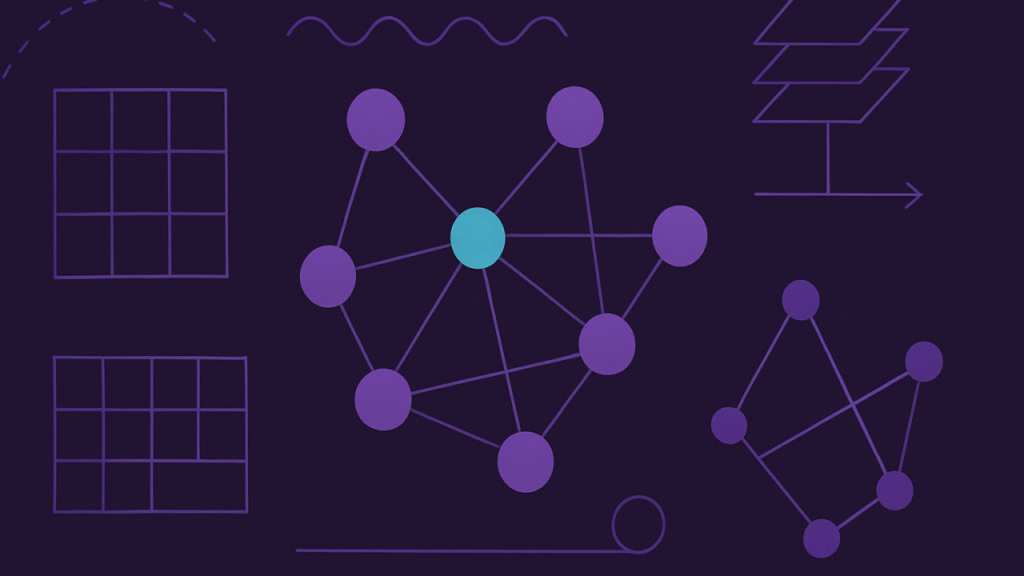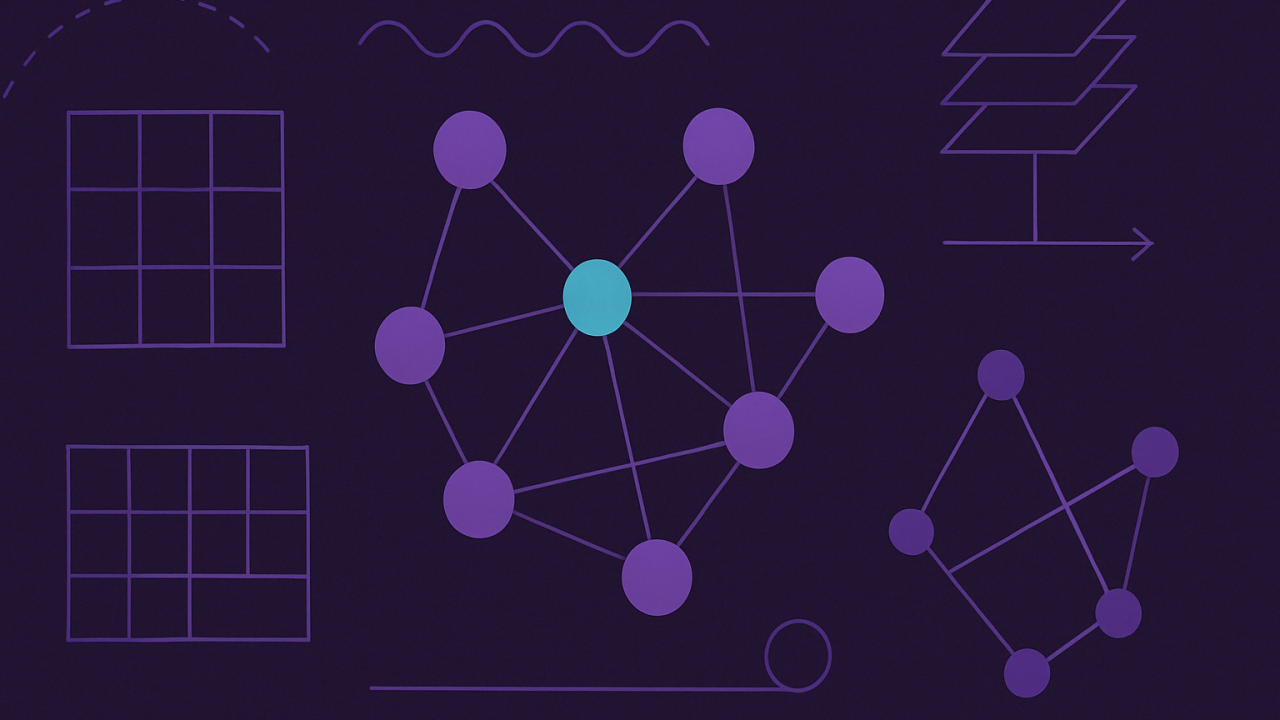Convolution is one of the most powerful ideas in modern machine learning, especially in computer vision and deep learning. However, traditional convolution works on regular grid structures like images and time-series data. What happens when data is stored in irregular, non-Euclidean structures such as graphs? This is where graph convolutions come into play.
In this article, we will explore what graph convolutions are, how they work, their applications, and why they are shaping the future of AI in fields like social networks, chemistry, biology, recommendation systems, and beyond.

Introduction: Why Graphs Matter in AI
Graphs are everywhere:
- Social networks (users connected by friendships).
- Biological networks (genes, proteins, and molecules).
- Recommendation systems (users linked to products they like).
- Transportation systems (cities connected by roads).
Unlike images or text, these datasets cannot be represented easily in grids. A graph consists of:
- Nodes (vertices): Entities like people, products, or molecules.
- Edges (links): Relationships or interactions between nodes.
Traditional neural networks fail to capture the complex relationships inside graphs. This is where Graph Neural Networks (GNNs) and convolutions on graphs come into play.
What is Convolution on Graphs?
In image processing, a convolution applies a filter (kernel) over pixels to extract features. For graphs, the challenge is that there is no fixed grid or order of neighbors. Instead, each node has a variable number of neighbors.
Graph convolution solves this by aggregating information from neighboring nodes.
Mathematically, a graph convolution can be written as: hv(k+1)=σ(W⋅AGG{hu(k)∣u∈N(v)})h_v^{(k+1)} = \sigma \Big( W \cdot \text{AGG}\{ h_u^{(k)} \mid u \in N(v) \} \Big)hv(k+1)=σ(W⋅AGG{hu(k)∣u∈N(v)})
Where:
- hv(k)h_v^{(k)}hv(k): Node embedding of node vvv at layer kkk.
- N(v)N(v)N(v): Neighbors of node vvv.
- AGG: Aggregation function (mean, sum, max, or attention).
- WWW: Learnable weight matrix.
- σ\sigmaσ: Activation function (like ReLU).
In simple words:
➡ Each node updates its representation by combining its own features with the features of its neighbors.
Types of Graph Convolutions
1. Spectral Convolutions
Based on graph signal processing. They use the graph Laplacian to perform convolution in the spectral (frequency) domain.
- More mathematical.
- Limited scalability.
2. Spatial Convolutions
Operate directly in the graph domain by aggregating neighbor information.
- More intuitive and scalable.
- Widely used in modern GNN architectures.
Popular Graph Convolutional Architectures
1. GCN (Graph Convolutional Networks)
The simplest and most famous model. Each node aggregates information from its neighbors and updates its embedding.
- Great for node classification, link prediction, and graph classification.
2. GraphSAGE
Introduces sampling for large-scale graphs. Instead of aggregating all neighbors, it samples a fixed number.
- Useful for web-scale graphs like social networks.
3. GAT (Graph Attention Networks)
Adds attention mechanisms to weight neighbor contributions differently.
- Improves performance when neighbors have varying importance.
4. ChebNet
Uses Chebyshev polynomials for spectral graph convolutions.
- More efficient in spectral domain learning.
Applications of Convolutions on Graphs
Graph convolutions are transforming multiple industries in 2025:
- Social Network Analysis
- Community detection.
- Fake news detection.
- Friend recommendations.
- Drug Discovery & Chemistry
- Molecules represented as graphs (atoms = nodes, bonds = edges).
- GNNs predict drug interactions and protein structures.
- Recommendation Systems
- User-product interactions as bipartite graphs.
- Better personalization using neighbor embeddings.
- Finance & Fraud Detection
- Transactions modeled as graphs.
- Detecting fraud rings and unusual patterns.
- Natural Language Processing
- Texts can be modeled as dependency graphs.
- GNNs capture semantic relationships between words.
- Transportation & Smart Cities
- Road networks modeled as graphs.
- GNNs optimize traffic predictions and routing.
Advantages of Graph Convolutions
✅ Capture relational information beyond simple features.
✅ Work on irregular and complex structures.
✅ Scalable to massive datasets with sampling techniques.
✅ Useful across multi-disciplinary fields.
Challenges of Graph Convolutions
❌ Over-smoothing: Node embeddings become too similar after many layers.
❌ Scalability: Hard to train on billions of nodes.
❌ Dynamic graphs: Many real-world graphs change over time.
❌ Explainability: Hard to interpret why a GNN made a decision.
Future of Graph Convolutions
The next decade will see exciting innovations:
- Graph Transformers: Combining attention and graph convolutions.
- Dynamic GNNs: Handling evolving real-world graphs.
- Scalable frameworks: Training on trillion-scale graphs.
- Hybrid AI Models: Merging GNNs with LLMs (like ChatGPT) for reasoning.
In 2025, graph convolutions are not just academic theory — they are powering drug discovery pipelines, recommendation engines, fraud detection systems, and smart city planning.


